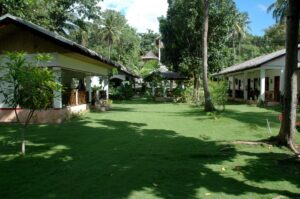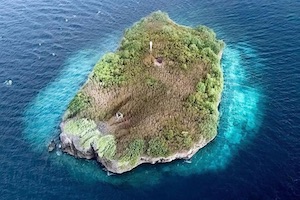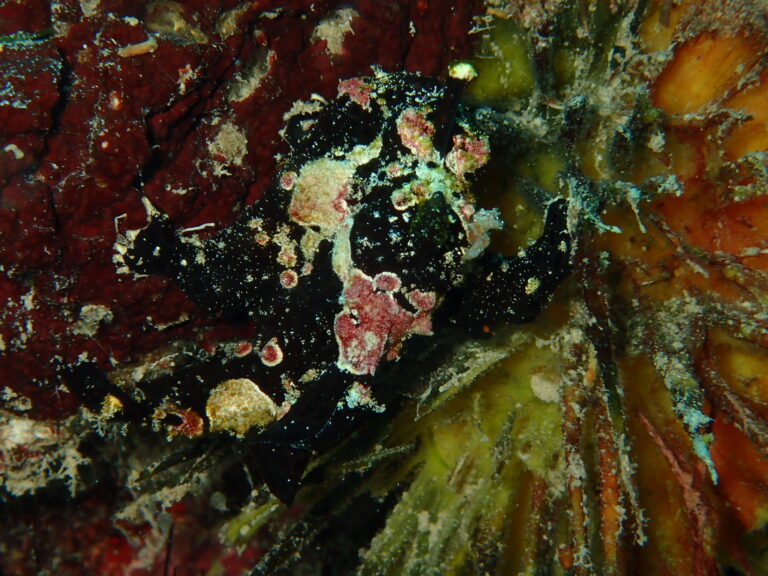The next great course after the PADI Open Water diver is Advanced Open Water where you will do 5 elective dives
PADI Advanced Open Water Diver
As a certified Open Water diver (from any dive agency) you’ve probably already discovered that scuba diving is more than just about getting wet and breathing underwater.
Advantages
- The Advanced Course will afford you an additional 5 scuba dives under the direct supervision of a PADI dive instructor to hone your skills.
- You’ll get to experience many of the different areas of diving such as drift, night diving, photography etc
- The PADI Advanced Scuba Diver certification allows you to dive to a deeper recommended depth of 30 meters exposing you to many more dive sites that the professional scuba diving shops and centers would not have allowed you to explore as an Open Water Diver if too deep.
The PADI advanced course is conducted over 2 days giving you approximately 15 hours of supervision and 5 dives in total. You’ll be exposed to 2 “core” dives being:
- Navigation dive
- Deep dive (30 meters approximately – slightly over)
In order to become a PADI Advanced diver you need to be 15 years old (or 12 for the Junior Advanced Diver course), and a certified Open Water Diver. Many people take the PADI Advanced course back to back of the Open Water course these days but once an Open Water Diver you can take it at any time.
First off you’ll take the predetermined Navigation and Deep dives that are “core” dives of the course. These are two essential skills to become familiar with.
The Importance of Under Water Navigation:
There are 5 distinct reasons why developing and practicing under water navigation skills will make your dives safer and more enjoyable:
- Reduces Diver Anxiety and Stress: Disorientation creates anxiety because you don’t know whether you’re swimming toward or away from the boat or shore, or which way to head if you decide to discontinue the dive. If there are areas that you wish to avoid you may experience anxiety because you do not know where you are relative to them. The ability to navigate eliminates this stress because you will always know where you are, which way to go and how far to the boat or shore.
- Avoids long surface swims: If you are not good at underwater navigation and your dive objection is some distance from the boat or shore, the only way to reach it without losing your way is to swim on the surface and then descend. Likewise if you are disorientated during a dive, when you run low on air you have no alternative but to ascend where you are and swim back on the surface. Not only are surface swims more tiring and less interesting than swimming under water, but in some areas where there is high boat traffic, they may be more hazardous.
- Increases the effectiveness of a dive plan: Navigation helps make a dive plan effective because it eliminates guesswork in the time and air you’ll use reaching your objective and returning. For example, if you and your buddy decide to head for a specific coral patch on a reef you’ll not waste valuable time, energy and dive time trying to locate it.
- Avoids Buddy separation: When you and your buddy plan a dive, your navigation skills will take you together along the same path to an agreed upon destination, minimizing the likelihood that you’ll be separated from one another.
- Conserves air: The previous benefits of navigation all help you to conserve air. You’ll breathe slower when you’re relaxed instead of disoriented and anxious.
There is a 6th good reason also. If you manage to get to a professional dive master or dive instructor level working in diving and mention that you know where something is – it can be awfully embarrassing and stressful if you lose your way. You’ll spend the entire dive cussing yourself and wishing that you had never opened your mouth.
Your Diving Instructor will familiarize you with a compass and set some tasks for you to complete under his direct supervision. The distance that you swim will be determined by the conditions and the visibility. You’ll be set some reference points and then asked to retrace your steps using both the compass and natural navigation techniques learn from the scuba instructor. This is an extremely informative and educational dive.
Under the direct supervision of your instructor you shall embark upon probably the deepest dive of your diving experience down to approximately 30 meters.
Recreational divers do not tend to make deep dives just to go deep but usually it is the means to an end. Deep diving gives you access to new dive sites that fall below the 18 meter depth, and allows you to participate in specific diving activities in a new way. For example diving deeper you can observe aquatic life that does not exist at shallower depths. Deep diving makes it possible to visit ship-wrecks rest in deeper water, and it provides occasions for under water photographs that you cannot take in shallow regions. In some places, deep diving makes it possible to drift effortlessly past deep water reefs and in other areas you’ll be able to collect or recover objects that were lost at greater depths.
To many people, choosing a depth to define “deep” is like choosing an altitude to define “high”. 18 metres might be high compared to standing on the ground but compared to the height of which a plane flies it is low. For recreational diving purposes 30 meters is considered quite deep.
The Advanced core dive to 30 meters is extremely educational in the way that it makes you aware of many facets of deep diving that might otherwise be over looked. It teaches the relationship between diving to greater depths and air consumption. The effects and hazards of Nitrogen Narcosis (not inherently dangerous if you know how to control it) are studied, the risks of decompression illness and how to avoid it, and the need for safety stops. Use of gauges and specific equipment to deep diving is also covered.
Your PADI dive instructor will have you perform certain tasks on the surface. Personally as an instructor I would set certain tests such as (student dependent) writing down 10 football teams, doing the 7 times table and then completing (writing) a multiple dive profile on the slate. Whilst you are undergoing this test I would be timing you. Changing slates and scuba diving to a depth of 30 meters I would ask the student to write down 10 pop stars (for example), complete the 9 times table and then plan on the slate another dive profile similar but not the same as before – this again would be timed. Obviously being under water and in your equipment will have some bearing on the time it takes to complete but you’d be surprised just how much longer it takes to complete due to Nitrogen Narcosis. Once you have experienced this personally it puts the dive in a completely different light.
You will have the opportunity to compare gauges and computers with the gauges of others at depth also. The difference between gauges and also between Analogue and Digital can be quite a lesson.
Although you dive to 30 meters on the course the maximum “recreational dive depth limit” is 40 meters. Although 40 meters (130 feet) has been set as the deep limit for general purposes 30 meters (100 feet) should be regarded as the optimal maximum limit.
Moving away from the core dives you get to choose 3 “elective” dives from a list to wet your appetite for that area of diving. The most popular are wreck dive, night dive, drift and photography but all are open to be explored and all are enough to allow you the opportunity of taste to see if you would like to pursue this specific diving activity. Just some on offer are:
• Boat Dive
• National Geographic Diver
• Drift Dive
• Dry Suit Dive
• Diver Propulsion Vehicle Dive – DPV
• Multilevel Dive
• Night Dive
• Peak Performance Buoyancy Dive
• Search & Recovery Dive
• Nitrox Dive (Enriched Air)
• Underwater Naturalist Dive
• Underwater Videography Dive
• Underwater Photography Dive
• Underwater Navigation Dive
• AWARE Fish Identification Dive
• Ship Wreck / sunken vehicle Dive
The next diver course after the PADI Advanced Diver is the PADI Rescue Diver Course.














